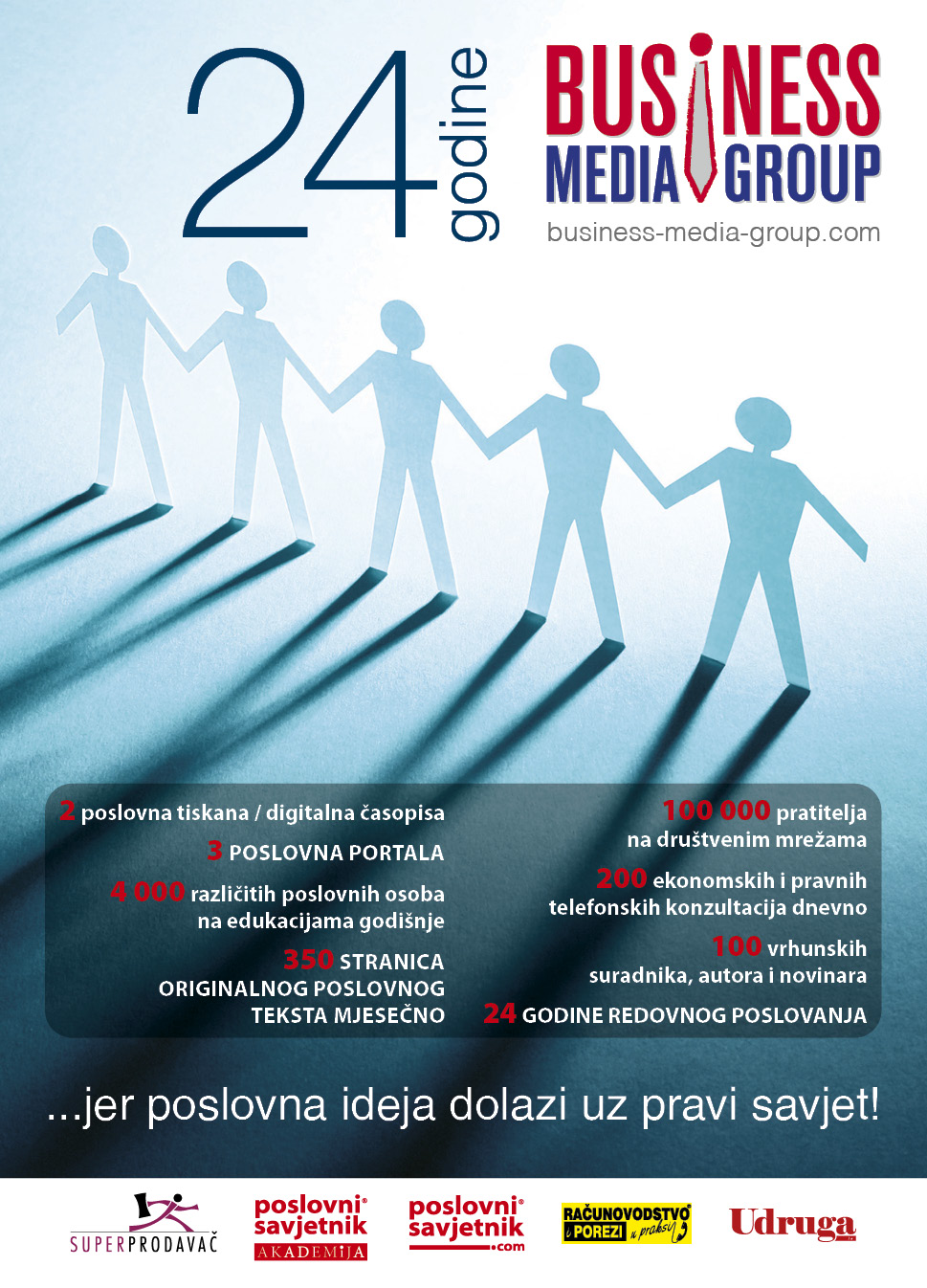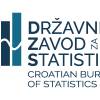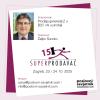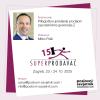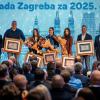John Lodder: 9 Steps to select your new employees and leaders for today and tomorrow

A 2017 Price Waterhouse Cooper survey showed that Directors, CEO’s and Founders saw the shortage of quality leaders and employees as the biggest threat for their companies. Finding CEO’s, leaders and employees of high quality and flexibility became very difficult in 2021.
The ‘Great Resignation’ that started in the USA last April and was followed in several European countries resulted in ca. 40 million people who quitted their jobs to find a better job or a better paid job, many started their own business.
This new phenenomon was explained in the 2021 Gallup report: ˝Only 12% of global employees are engaged in their work, are committed to their company culture and are satisfied with their management.˝
Thus: 88% of all employees are not engaged!
Gallup concludes that thousands of individuals are just fed up. They are overworked and they feel not appreciated, many people who work in high-wage industries have to work incredibly long hours.
This caused large shortages of staff in many sectors like retail, horeca, healthcare, transportation and logistics.
We also see that COVID-19 is accelerating a shift to hybrid working models, which requires a fundamental change in the skills leaders and employees need to be successful. Questions are a.o.: Can we train our people? Do we know what the required skills are? How do we find and how do we select these leaders and employees?
If you have a vacancy, selecting and hiring a new leader or employee is a huge investment for every organization.
From creating an advertisement, the selection procedure, signing the contract to finishing the onboarding course.
This process usually takes 6 - 8 months. All together a lot of time and costs are invested until the new teammember will start delivering her or his return on investment.
An observation
The economy is growing with 3-9% in Quarter 2 depending at which country you look. Consequence of this growth and the ‘Great Resignation’ is that there are thousands of job positions that cannot be filled; finding good employees and leaders is a difficult quest. There are more vacancies than competent candidates.
But is this conlusion correct? Or, are we not looking good enough?
In this column I focus on an effective method for selecting quality people and use a short comparison between Female and Male candidates. I end with a short look what the ‘Hybrid working’ trend could mean for Leadership behavior.
Traditional selection process
Nearly all organizations work traditional in selecting employees and leaders. Most companies are still screening based on résumé, diplomas and experience. And, age is considered important; when 45+ you are usually not of interest anymore.
And thus, most organizations are ‘fishing in the same small pont’.
After a pre-selection based on the mentioned criteria the ‘best’ candidates are filtered-out for a so called unstructured interview. In this open conversation with the candidate the most important selection criteria for a certain task or job are usually not thoroughly checked.
This is not a very clever approach if you look at your investment and at scientific research of selection methods.
The predictive value of selection tools
Meta research by Schmidt and Hunter (University of Iowa) is one of the most important sources about the predictive value of selection tools. It is very clear that years of experience, age and unstructured interview have a very low predictive value for future success of a candidate for a specific job position. Another research concludes the same for screening based on résumé’s and diplomas. And yet….this is what most companies still do.
Competences and experience less relevant
Of course there is a better and more effective way to select!
First: competences (what people can do and what they know) are not irrelevant but it’s not enough.
In a world that, influenced by technology, is changing fast, competences and experiences are shorter and shorter valid.
Second and equal important with people who are successful in certain jobs and tasks, do they have right mix of ‘being able’, ‘wanting’ and ‘being’.
The ‘wanting’ is about motives of people and the ‘being’ is about the personal characteristics. Examples of characteristics that are very helpful in a fast changing world are a.o. resilience, self reflection, creativity, curiosity.
This can be measured very well with the ‘Big Five Personality test’.
Three dominant motives
According to David McClelland (Harvard) there are three dominant motives that have a big impact on the behavior of people. It’s the achievement motive, the power-influence motive and the social motive. There is not an ‘ideal coctail’ of personal characteristics and motives but there exist better or worse combinations related to a specific job position.
If you have a vacant jobposition you can look carefully in your organization which people excel in specific (leadership) tasks, next you can find which personal characteristics and dominant motives are significantly present in your ‘best performers’ and these you should use in creating a job profile for your vacancy.
Criterion oriented interview
The next step is to interview your candidates and rank them based on a criterion oriented interview; you will notice that the predictive value of success of the candidate in a specific job position is much higher than screening based on résumé, diplomas and experience.
With this criterion oriented interview you ask in a structured way for specific behavior that you decided earlier to be relevant.
Mapping learning- and adaptability competences
A relevant extra possibility is to measure the learning and adaptability competences of your best cadidates. You then not only know the suitability for the job and the tasks of today but you also have a good indication of their performance in tomorrow’s world.
It is possible to map the learning and adaptibility competences with a test. There are validated tests available online; a good one is the HFM test which is available in many languages. It measures the learning ability in four aspects and also maps the selfawareness of the candidate.
Onboarding program
It turned out that 5% of new employees do not come back after their first day. 20% quits after 45 days and 1 out of 3 new employees leaves the organization, voluntarily or not, within the first year. The cause usually is a process that is not smooth and not felt as welcoming. That’s why the onboarding process is improved and ideas were presented on a congress in Amsterdam (Netherlands) last month.
An attractive onboarding starts in the period of the selection process to build up an open, trusted and informative relationship and not after entering the company.
For a good and effective onboarding 6 C’s are essential: Compliance, Clarification, Connection, Culture, Confidence and Checkback.
Not only must the paperwork be correct, new employees also need to know as soon as possible what is expected from them. And for instance know whom they can approach with questions to be successful and what the ‘informal rules’ in the organization are.
9 steps to an effective selection method
1.Determine which criteria are decisive for a specific job position or task. Don’t think about experience, diplomas and age but look at what kind of ‘coctail’ of competences, personal characteristics and motives your best performing people in a similar jobposition of task are having.
2.Create, based on that ’coctail’, a new job description and don’t add requirements that are not really necessary.
3.Make a creative text in which the criteria stand out and leave all traditional selection criteria out if they are not 100% relevant for this job.
4.Construct a criterion oriented interview based on the 5-7 most important criteria along the axis of ‘being able, wanting and being’. Make a feed-back form or checklist that you use point by point during the job interview with the candidate.
5.Work in selection teams of two persons (the ‘four eyes principle’, to avoid personal or social bias) and score the criteria on your feed-back form.
6.Score every candidate on every criterium, compare the scores with the other selection teams and let only the best candidate(s) go further to the next round.
7.Let every candidate who goes to the second interview round do an online learning ability- and a motive test.
8.Let every potential candidate who goes to the last interview round take a BIG Five Personality test.
9.Create a super onboarding program for your new colleague.
Bigger pool of suitable candidates
With this approach a complete new pool of candidates will come available. Selections with algorithms that used these principles (selection based on relevant criteria) showed that people with other backgrounds in terms of (sector) experience, education, age or cultural background suddenly are competent.
In this way there are more new potential managers and employees available then we thought possible.
In this way we are looking at WHO someone is, and so we let prevale the ‘coctail’ of passion, motivation and talent above a paper résumé.
If you want your best candidate(s) to be psychologically tested I strongly recommend the Big Five Personality Traits test.
Selection tools like MBTI and DISC
Most companies use ‘tools’ like the popular MBTI or DISC in spite that these are not scientifically validated.
MBTI nor DISC can make significant predictions about behavior, even worse is that the test scores change when a person takes this tool multiple times, a.o. because the MBTI and DISC are easy to fake.
What you should want from an expensive personality test is a result that tells you how a person’s personality is and how (s)he will likely behave in the future. Will (s)he fit in the job and in your (future) organization?
Therefore it's time for HRM and recruiters to abandon MBTI and DISC and start using real personality constructs, tests and theories. Apart from the bad decision making and the waste of money, in the current age of inclusivity and diversity and avoiding labels, we can't use fake tools anymore.
The Big Five Personality Traits Test (The Big5)
Everybody’s personality, the person somebody is, can be described in 5 personality traits or dimensions.
The Big Five Personality Traits Model was shaped in the 1990s; however, it has its roots from many researches that can be traced back to 1936. (Allport, Cattell). The general consensus in academic psychology today is that there are five fundamental personality traits. This model is the basis of most tests constructed and used by psychologists and psychiatrists in most languages.
The Big5 is a scientifically solid construct that measures personality and predicts future behavior.
The tests are difficult to fake and there is much scientific literature supporting them, which can point out how people will probably vote in the next elections, how susceptible someone is to stress, burnout or some kind of mental disorder. And they predict how someone will likely perform at work. A great number of other implications and findings say something about the behavior of people with a certain set of personality characteristics.
The Big5 works with dimensions, which means people can average right in the middle of Extroversion and Introversion for instance: an Ambivert. Or they can tell that certain people lean towards extroversion, but that at lots of times they will exhibit introverted behavior. This makes for a much higher resolution ‘photo’ of someone.
In figure 1 you see the 5 Key traits or dimensions: Openness, Conscientiousness, Extraversion, Agreeableness, and Neuroticism. Based on the first letters of the traits the Big5 is also known as the OCEAN model.
Diffent results for Females and Males
A Dutch female Brainresearcher and Psychiatrist studied the inequality between Female and Male leaders, based on many relevant studies, social-cultural differences, the differences of brains (development), hormones, immunity- and stress-systems, and the different scores on the Big5 test.
The conclusion of her study, described in a beautiful book, is that Females and Males with a similar level of education - in average - are equally qualified for higher and top leadership positions based on intelligence and personality characteristics.
For your selection procedure this is an important result because there are (too?) many prejudices about female competences by males but also by females.
The Five Key Dimensions of People’s Personalities
Untill high age these 5 traits are very stable. People who do not exhibit a clear predisposition to a single factor in each dimension are considered adaptable, moderate and reasonable.
In every dimension I give some markers in terms of the opposites like ‘open vs. closed’ or ‘talkative vs. silent’ and a short explanation of the dimension.
!! The scores of females and males compared are of course an average of both groups from many studies combined, we may not apply this for an individual female or male, for that an individual should take the test. !!
Figure 1: the 5 Key dimensions or traits of The Big5.
1. Openness (vs. closed, cautious)
Markers: artistically sensitive - artistically insensitive # intellectual - unreflective, narrow # imaginative - simple, direct
# polished, refined - crude, boorish.
The Openess dimension refers to a person’s intellect or imagination. This dimension is meant to assess a person’s creativity and desire to adapt to explore new things; to assess one’s openness to experience, such as; aesthetic sensitivity, intellect, curiosity, etc.
For example, if you’re looking to hire someone for a creative job such as; a graphic designer, photographer or videographer, you might want someone who prefers openness to new experiences. However, someone with a low score might be considered as pragmatic and driven by conventional methods.
Females and males - in average - score equal on this trait.
2. Conscientiousness (vs. careless, laxity)
Markers: fussy, tidy – careles # responsible – undependable # scrupulous – unscrupulous # persevering - quitting, fickle.
This implies the desire of an individual to do the task correctly. Conscientiousness is the dimension for assessing one’s diligence, efficiency and the ability to be organized. A high score for conscientiousness implies self-discipline.
A low score implies spontaneous behavior and even a lack of reliability.
Females - in average - score higher than males.
3. Extroversion (vs. introversion, reserved)
Markers: talkative – silent # frank, open – secretive # adventurous – cautious # sociable - reclusive.
This dimension measures if an individual is more open to external interactions or prefers being low-key. Extroverts are perceived as people with high energy levels, whereas introverts prefer more time alone and less stimulation.
Females - in average - score lower than males.
4. Agreeableness (vs. critical, rational)
Markers: goodnatured – irritable # not jealous – jealous # mild, gentle – headstrong # cooperative - negativistic.
This trait reflects social harmony or the lack of it. Agreeable people are considered as benevolent, trusting, helpful and willing to compromise for the greater good. Disagreeable individuals are seen as selfish, skeptic and unfriendly.
Females - in average - score higher than males.
5. Neuroticism (vs. resilient, confident)
Markers: poised – nervous, tense # calm – anxious # composed – excitable # not hypochondriacal - hypochondriacal.
This is a measure of a person’s ability to feel negative emotions like anxiety, and anger. In other words, neuroticism measures a person’s emotional stability.
Females - in average - score higher than males (and are therefor more vulnerable for depression or burn-out).
The only way to predict the future is to create it (Peter Drucker)
COVID-19 is accelerating a shift to hybrid work models
Robert Hooijberg and Michael Watkins are both professor at IMD Business School in Lausanne, Switzerland.
They surveyed 40 executives globally in November 2020 and found that three-quarters of them were working virtually for at least 60% of the time and two-thirds more than 80% of the time. They expected to continue working at least 50% virtually beyond the pandemic, suggesting that COVID-19 has driven a permanent shift in how we work
Their conclusions are summarized in the next paragraph.
Cooperation and Teamwork skills will fundamentally change
The pandemic has accelerated a pre-COVID-19 shift in how individuals and teams do intellectual work. Companies have learned that routine tasks involving transactions and coordination can be done purely virtually, while work requiring true team collaboration (collective learning, innovation, building a shared culture) is best done face to face.
They envision that the post-pandemic future of teamwork will be a purposeful hybrid combination of virtual coordination and in-person collaboration.
This requires a fundamental change in the skills team leaders need to succeed. Effective leadership in this new hybrid world requires different skills that go beyond traditional team leadership. Specifically, organizations will need leaders who can operate well across two distinct modes. For much of the time they will operate in virtual coordination mode. This means establishing goals, monitoring progress, and driving information sharing, and sustaining connections among colleagues working remotely. When their teams periodically come together to engage in true collaboration, leaders will need to operate in face-to-face collaboration mode, fostering deep learning, innovation, acculturation and dedication.
The nature and mix of team tasks will dictate the modes in which those teams operate. Tasks that involve working interdependently but without much integration - reporting, performing administrative tasks, making simple decisions, sharing information, drafting documents, and performing financial analyses - will mostly be done virtually.
Likewise, their research and experience have shown that most one-on-one interactions between leaders and their reports, including some coaching, can be accomplished effectively through virtual means
However, essential tasks that require team members to integrate their knowledge, create safe spaces for dialogue on difficult issues and form emotional connections cannot be done productively while working virtually.
For example, team efforts to achieve breakthrough innovation, solve complex problems, build culture, and manage conflicts are still performed much more effectively in person, given the current limitations of technology. (See “The Future of Work Survey” for more about the research.)
A great leader
A great leader has the ability to reinvent in time and turns challenges into opportunities. They are full-time problem solvers. They have to deal constantly with all kind of - unexpected - challenges, from conflicts in teams to unsatisfied business partners or changes in the market. Great leaders push themselves constantly, to defeat obstacles they adjust, accelerate and take risks.
If leaders would not change regularly many big companies we know today would not exist anymore. You have to think constantly about adjusting, changing and growing. Without ambition you are out of business in no time.
To survive, organizations are forced to anticipate faster as ever to developments in their different markets and take action. In average, companies reinvented itself at 37,5 years in the 1960’s which went up to an average reinvention every 3,5 years in the 2020’s.
Being an effective and trusted leader also means that you are able to navigate along obstacles and continue to keep your goals clear in mind, no matter how difficult a situation can be.
If you can learn from your mistakes, if you are capable to listen with an ‘open mind’ to your employees and colleagues and solve problems creatively you can turn challenges into great leadership.
As you can be a good leader with inspiring, motivating and with an empathic ability, it will be factors as taking action, honesty and being trusted that will give you the respect, support and trust that are necessary to be(come) really successful.
As Bhaji Rath says: “A great leader has a clear vision, has courage, integrity, honesty, humbleness and a clear focus. Good leaders help their people to achieve their goals, are not afraid to hire people that migt be better than they are, and are proud on the results of people who helped achieve them.˝
For this column I was inspired by Prof. Dr. Iris Sommer, Robert Hooijberg and Michael Watkins, Richard van Hooijdonk, Ralf Knegtmans and Peter Boerman.
(ps/sm)




